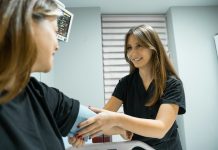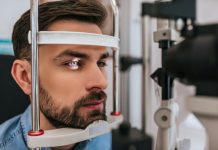
Parkinson’s disease is often associated with tremors, stiffness, and difficulty moving, but it also frequently affects speech.
Many people with Parkinson’s experience changes in their voice and speech, which can be distressing and significantly impact their quality of life.
Speech therapy has emerged as a crucial intervention to help manage these challenges, enhancing communication abilities and boosting confidence.
The core issue for many Parkinson’s patients is that the disease affects the muscles in the face, throat, and respiratory system, which are vital for speaking.
This can result in a softer voice, mumbled or rapid speech, and a monotone speech pattern. As a result, it can be hard for patients to be understood, which often leads to social withdrawal.
Speech therapy, delivered by a speech-language pathologist (SLP), offers various techniques tailored to address the specific needs of Parkinson’s patients. One well-known program is the Lee Silverman Voice Treatment (LSVT) LOUD® therapy.
This program focuses on increasing vocal loudness with intensive voice exercises. Research has shown that LSVT LOUD® can significantly improve both the volume and clarity of speech for Parkinson’s patients.
Studies published in peer-reviewed journals, such as the Journal of Speech, Language, and Hearing Research, have demonstrated that patients undergoing this therapy can maintain improvements in their speech for up to two years post-treatment.
Another aspect of speech therapy for Parkinson’s involves breathing exercises. These exercises aim to strengthen the diaphragm and increase lung capacity, which in turn supports better speech projection and vocal endurance.
An SLP might also work on pitch variation, helping patients learn to inflect their voice up and down to avoid the monotone speech often associated with Parkinson’s.
Cognitive-linguistic exercises are also a component of speech therapy. Parkinson’s can affect cognitive processes like thinking and memory, which can impact speech.
Therapists use specific activities to improve the cognitive aspects of communication, such as recalling words and organizing thoughts more effectively.
Technology has also become a useful tool in speech therapy for Parkinson’s patients. Apps and devices that provide feedback on speech quality, such as volume and pitch, allow for daily practice and self-monitoring.
This technological support is especially valuable in maintaining improvements gained during therapy sessions.
The benefits of speech therapy extend beyond improved speech clarity and loudness. Enhanced communication ability can lead to better relationships and social interactions, reducing feelings of isolation and depression.
Moreover, many patients report higher self-esteem as they regain control over their speech.
Family members and caregivers also play a vital role in this process. They can support the patient’s practice at home, help monitor progress, and encourage the use of new speech techniques in daily conversations.
This supportive environment is crucial for the success of speech therapy.
Regular evaluations by an SLP are important to adjust the therapy as the disease progresses or as the needs of the patient change. This ensures that the therapy continues to be effective over time, addressing new challenges as they arise.
In conclusion, speech therapy offers significant benefits for Parkinson’s patients, helping them to communicate more effectively and confidently.
It’s a powerful tool that not only improves speech but also enhances overall quality of life, providing patients with a stronger voice in every sense of the word.
If you care about Parkinson’s disease, please read studies that Vitamin B may slow down cognitive decline, and Mediterranean diet could help lower risk of Parkinson’s.
For more information about brain health, please see recent studies that blueberry supplements may prevent cognitive decline, and results showing Plant-based diets could protect cognitive health from air pollution.
Copyright © 2024 Knowridge Science Report. All rights reserved.



